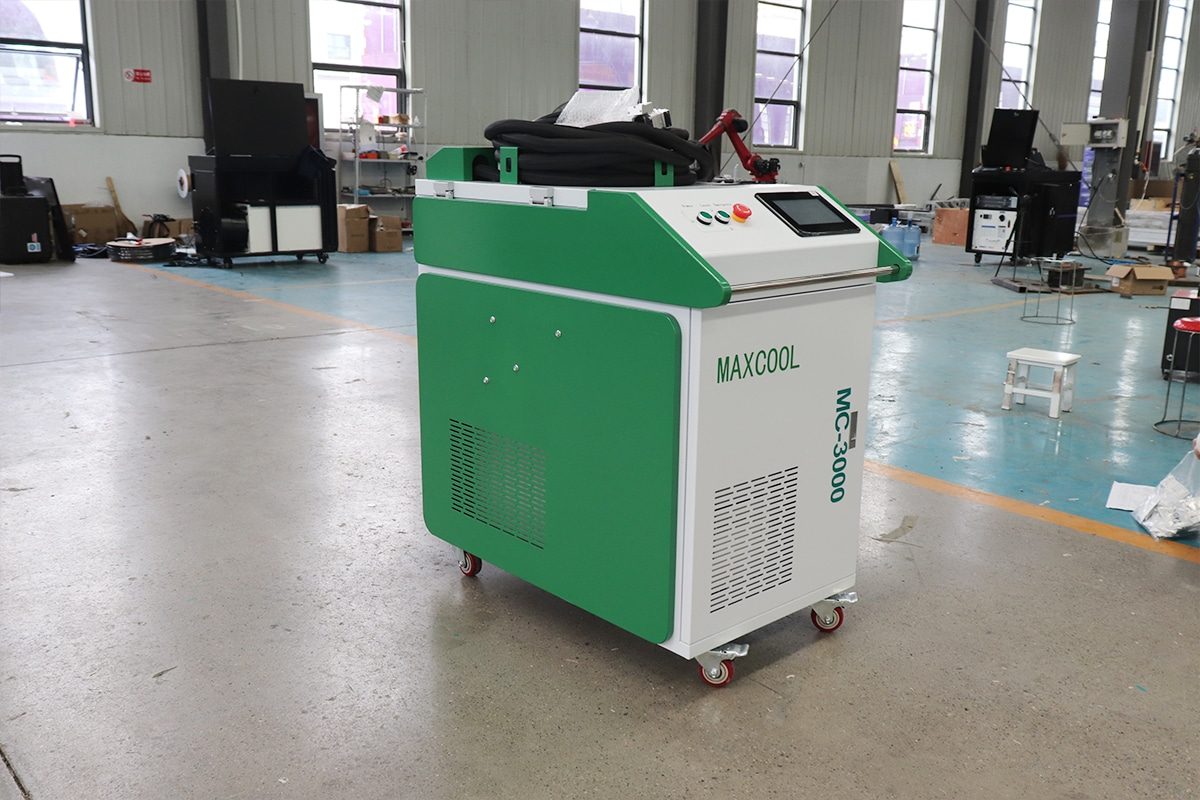Laser cleaning machines have emerged as a revolutionary technology for surface preparation and contamination removal in industries such as manufacturing, automotive, aerospace, and heritage conservation. The effectiveness of laser cleaning hinges on selecting the right parameters, such as laser power, pulse duration, frequency, and wavelength, to suit the material and type of contaminant. By fine-tuning these parameters, users can achieve optimal cleaning performance, whether removing rust, paint, oxides, or organic residues. This guide will delve into the key considerations and strategies for choosing the most appropriate laser cleaning parameters, ensuring efficient and safe cleaning processes tailored to each specific application.

Identify the Material and Contaminant
The first step in choosing the appropriate laser cleaning parameters is to thoroughly understand the material to be cleaned and the contaminants to be removed:
Substrate Identification: Determine whether the substrate is metal (e.g., steel, aluminum, copper), non-metal (e.g., plastics, ceramics), or a sensitive surface such as historical artifacts or electronics. Different substrates have distinct thermal and optical properties that influence laser interaction.
Contaminant Type: Identify the specific contaminant or coating, such as rust, paint, oxides, grease, or adhesive residues. The thickness, composition, and adhesion strength of the contaminant will help guide parameter selection for effective removal.
Set Initial Laser Parameters
Once the material and contaminant have been identified, establish initial laser settings tailored to the application. This involves configuring key parameters based on the characteristics of both the substrate and the contaminant:
Laser Power: Choose an initial power level that is appropriate for the material and contamination type. Higher power is often needed for thick or strongly adhered layers, while lower power is recommended for delicate or heat-sensitive substrates.
Pulse Duration: Select a pulse duration (e.g., nanosecond, picosecond) that balances cleaning effectiveness and substrate protection. Shorter pulses minimize heat impact, whereas longer pulses deliver more energy.
Wavelength: Opt for a wavelength that is effectively absorbed by the contaminant while limiting interaction with the underlying substrate. This ensures efficient energy transfer.
Pulse Frequency: Determine the pulse frequency, or number of pulses per second, to balance cleaning speed and energy delivery.
Scanning Speed: Set an initial scanning speed based on the required cleaning depth and material sensitivity. Faster speeds reduce heat buildup but may require more passes for complete cleaning.
Beam Spot Size: Adjust the spot size based on the precision required; smaller spots allow for a higher concentration of energy, while larger spots cover more area quickly.
Conduct Tests and Adjustments
Perform a series of controlled tests on a sample area to evaluate the effectiveness of the initial parameter settings:
Assess Cleaning Efficiency: Check whether the laser successfully removes the contaminant without damaging the substrate. If the cleaning is incomplete, increase laser power, decrease scanning speed, or adjust other parameters as needed.
Monitor Substrate Impact: Examine the substrate for any signs of damage, discoloration, or deformation. If any issues arise, reduce laser power, shorten the pulse duration, or increase scanning speed to minimize heat accumulation and substrate impact.
Fine-Tune Parameters: Make incremental adjustments to optimize the balance between effective contaminant removal and substrate protection. Consider testing different pulse durations, power levels, and scanning speeds.
Monitoring and Quality Control
To maintain consistent laser cleaning performance and ensure optimal results, establish ongoing monitoring and quality control protocols:
Real-Time Monitoring: Utilize sensors and monitoring systems to track the cleaning process and automatically adjust parameters as needed to maintain consistent cleaning results.
Periodic Inspections: Conduct regular inspections of cleaned surfaces to verify that contaminants have been thoroughly removed without compromising substrate integrity.
Document Settings: Record the optimized laser parameters for future reference, enabling repeatable and consistent cleaning for similar applications.
By following this step-by-step process—identifying the material and contaminant, setting initial parameters, conducting tests and adjustments, and implementing monitoring and quality control—you can effectively tailor laser cleaning parameters to your specific needs. This approach ensures precision, efficiency, and substrate protection, making laser cleaning a powerful tool for diverse industrial applications.
Comments on “How To Choose Appropriate Laser Cleaning Parameters?”